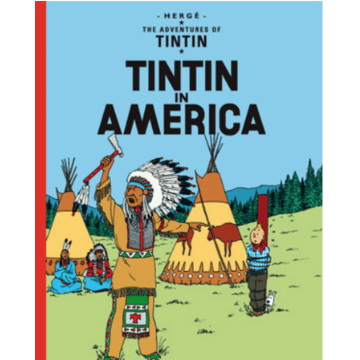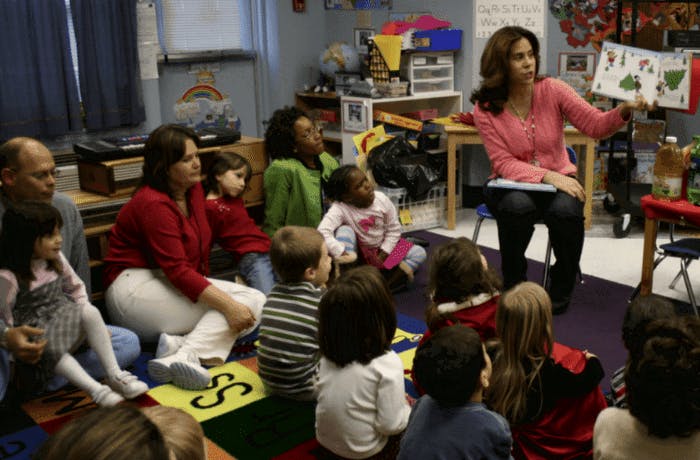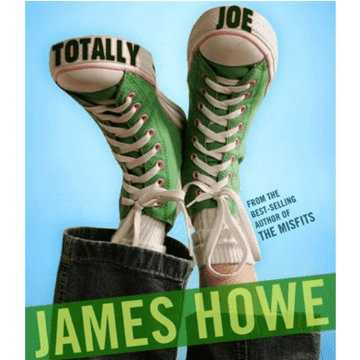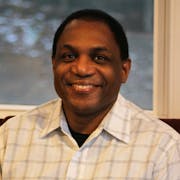Kids & Books, Windows & Mirrors ... Magic!
by ER Co-founder Andrew Grant-Thomas in conversation with children's literacy Professor Jennifer Manak

A few of the books on my daughters’ shelves.
Jennifer Manak is Associate Professor of Elementary Education and Coordinator of the Graduate Reading Program at Bridgewater State University in Bridgewater, Massachusetts. She teaches pre-service and in-service teachers how to teach literacy (reading, writing, speaking, and listening). Multicultural children’s literature and a concern for how to support all students are threads throughout her work.
If you have a young child in your life, be sure to check out Jenn’s K-5 Reading About Diversity curriculum. I asked Jenn what drew her to multicultural children’s literature.
The meaning behind the metaphor
Jenn: Well, I was a teacher in Florida for 7 years at various grade levels and reading, writing and children’s books have always been what I loved. I’ve always been interested in creating a classroom environment where all students feel respected and cared for.
I really do see children’s books as “windows” into other cultures, “mirrors” reflecting the children themselves, and “bridges” to see how we’re connected and similar to other groups.
I remember working with this little guy, Sampson, who was just all over the place. And one morning I said to him, “You know, I have some books and I’m wondering if you’d like to check them out.” And he sat in my rocking chair, read the book I gave him, and he said, “I love this, this is great! Do you have more?” And I said, “I do! I have a whole bag here.”
And, you know, the teachers he worked with had said he didn’t care for reading! But he saw himself in a book with an African-American character who was having struggles that were similar to his.
And then when I went to Nicaragua I started a nonprofit called Jardin de los Libros, Garden of Books, and I brought children’s books by Latin American authors and illustrators, in Spanish, to the kids there. And to see the excitement on their faces to see themselves in texts was so amazing for me!
Avoiding bias & inaccuracy, choosing quality.
Andrew: So mirrors, windows, and bridges, engaged young readers — what’s at stake in all this?

The cover of Tintin in America, by the Belgian cartoonist, Herge.
A few years ago, my older daughter, Lola, was 5 and she read a ton of books from the children’s section at our local public library. And we learned that many of the Tintin books were in the children’s section there, including Tintin in America, which had some pretty absurd caricatures of Native Americans, and some other controversial ones.
Which raised a question for some of us as parents: what defines a “children’s book?” How did the staff decide whether to put a book in the children’s section rather than the young adult section? I ended up writing a piece for the local paper. And it was astonishing to me to see how many parents wrote to say that their 6, 8, 10 year-old white kids were perfectly capable of sifting the good from the bad in the Tintin books.
I’d love to hear your take on all that.
Jenn: Wow. That’s a big thing to discuss. I’m really interested in what’s in children’s libraries and bookstores.
When we look at multicultural children’s books we want to ask: does the text reflect the worldview of the cultural group being represented? Are there implicit stereotypes and biases being conveyed?
I encourage families and teachers to share quality, award-winning books with their kids — “healthy food,” not “junk food.” I’m not talking about only reading Coretta Scott King and Newbery award winners. But a book with a lot of stereotypes and inaccuracies won’t be recognized as a quality text by the children’s literature community. So looking up what awards and recognition a book receives can be helpful.
Children’s literature experts also have huge debates about whether a cultural “outsider” can accurately portray another culture. I’m a pretty strong believer that insiders to a culture offer more accurate accounts.
I don’t think kids will often figure out inaccuracies and misrepresentations on their own. They need some guidance and not all parents are going to talk about stereotypes and biases in texts. We have to be thoughtful about what we put in libraries without censoring.

Reading time! By woodleywonderworks
Why adults should read with kids.
Andrew: You’re a big believer in reading with your kids, especially difficult books. What is the “intervention” that you’re trying to bring to reading with your kids?
Jenn: It’s really about developing critical thinking skills. It’s about developing awareness in kids about issues in the world, coming to see a given situation from a range of perspectives, and preparing them to be more and more knowledgeable and thoughtful over time.
I’ve been working to develop text sets that reflect different perspectives on an historical event — the American Revolution, for example. What did women do? What did children do? What did blacks do? What did Native Americans who? What did it look like from the British perspective?
Those discussions really are insightful for children. I’ve done studies with both 4th and 5th grade students where we ask them, Well, how do we know this is the right explanation? How do we know this is what Columbus said? Who is writing this and why did they write from this perspective? Whose voice is being privileged here and whose is missing?
Andrew: Your kids are 9 and 6. Has there ever been a time, or could you imagine a case, when the messages in a children’s book are such that you would say, no, I’m not even going to read that book with you because you’re not ready.

Jenn: That’s an interesting question. [Pause] I think my answer would always be: let’s read that together. There’s a book I have down in the basement, Totally Joe, by James Howe. It’s a coming-of-age story about a teenager who’s gay.
It’s a good book, a well-written book, but my son is a third grader and I think it’ll be more appropriate when he’s in middle school. So there are some texts I have on a higher shelf where I’m thinking, You know what? Someday you’ll be ready for it but it’s not what I want you thinking about now. So that’s a developmental issue.
But otherwise we’re going to talk about it and, so far in my life with my own two children, that’s worked [laughs]. But you’re making me think about what to do down the road!
Andrew: That question goes to the heart of a dispute I had a chance to weigh in on on NPR a while back. Are there books — Little Black Sambo, maybe— we just shouldn’t expose little kids to?
My own question is whether adults can count on finding the words to counter the work a powerful set of images can do in the mind of a four year-old? To a kid, an image from Tintin in the Congo might be worth more than 1,000 of my words! Sounds like your inclination is to have the conversation, but it’s tough.

This Tintin in the Congo panel still blows my mind. The DOG thinks “Coco” isn’t bright!
Jenn: It’s tough but those conversations can help prepare your child for the real world.
I was in the grocery store with my son, who was 3. We saw a man, maybe three feet away, who was missing one arm below the elbow. And my son said, “Mommy, what happened to him?!”
I looked at my son and I looked at the man, gave him a nice smile and said, “Excuse me, my son is wondering what happened.” And the man looked at me with this face and he said, “Oh, you know, I had a little bit of an accident here. Thank you for asking.”
It was so hard for me, but the man was happy that I acknowledged it rather than ignoring it. And that’s what I’m talking about: seeing different scenarios playing out in books and talking about it often increases kids’ awareness of things that happen in the real world.

Some of the books included in the Jenn Manak’s and Tanya Frank’s K-5 Reading About Diversity curriculum.
Diversity as a steppingstone to social justice.
Andrew: You sent me the Reading About Diversity curriculum, which emphasizes diversity rather than social justice or issues of power. What advice can you give parents who want to go beyond diversity to nurture social justice sensibilities in their kids?
Jenn: When we talk about social justice we’re talking, first, about promoting a just society, second, about challenging injustices, and, third, about valuing diversity. So I really feel it’s important to establish the value of diversity as a foundation for later conversations.
When Tanya Frank, a social worker in the Boston Public Schools, and I developed the Reading About Diversity curriculum we wanted the texts we selected as developmentally appropriate to each grade level to be attentive to race and ethnicity, family structure, cultural and linguistic diversity, ability and disability. So those concepts are introduced across each year through fifth grade and then we developed those discussion questions to guide the students’ understanding of diversity. So those focus on building the students’ knowledge and skills and comfort voicing their thinking, which I think is important.
So I see the Reading About Diversity Curriculum as helping to establish one foundational piece. When I talk to my students, who are in-service or pre-service teachers, that’s a different audience and a different conversation.
Andrew: Books are one input into how children think about race, identity, and social justice issues. What are the other big inputs and where else can caregivers have an especially big influence?
Jenn: As parents and teachers and caregivers, I think it’s really important to consider our own biases.
We’re all continually learning and growing and learning more about different populations and having that openness and the opportunity to sit and discuss some of these injustices and inequities with children is key. And maybe they’ll say, I don’t see anything wrong with it and I’ll say, What if you were in that situation, how would you feel? And then it’s Oh, well I never really thought of it that way. So I think having those conversations not only help enlighten the children around you but also help you as an adult to really dig into some of your own biases and thinking.
That’s what’s really drawn me to this work. I love working with people and I love having these conversations that make me think, dig deeper, and grow. As parents we have a huge amount of power in our ability to model being thoughtful about our own biases and approach to diversity.
Andrew Grant-Thomas



